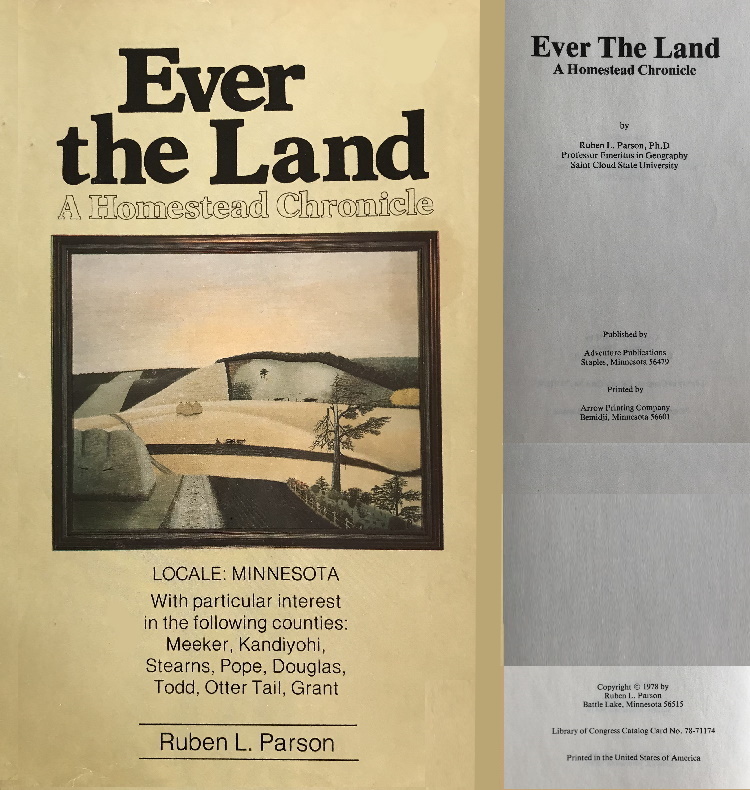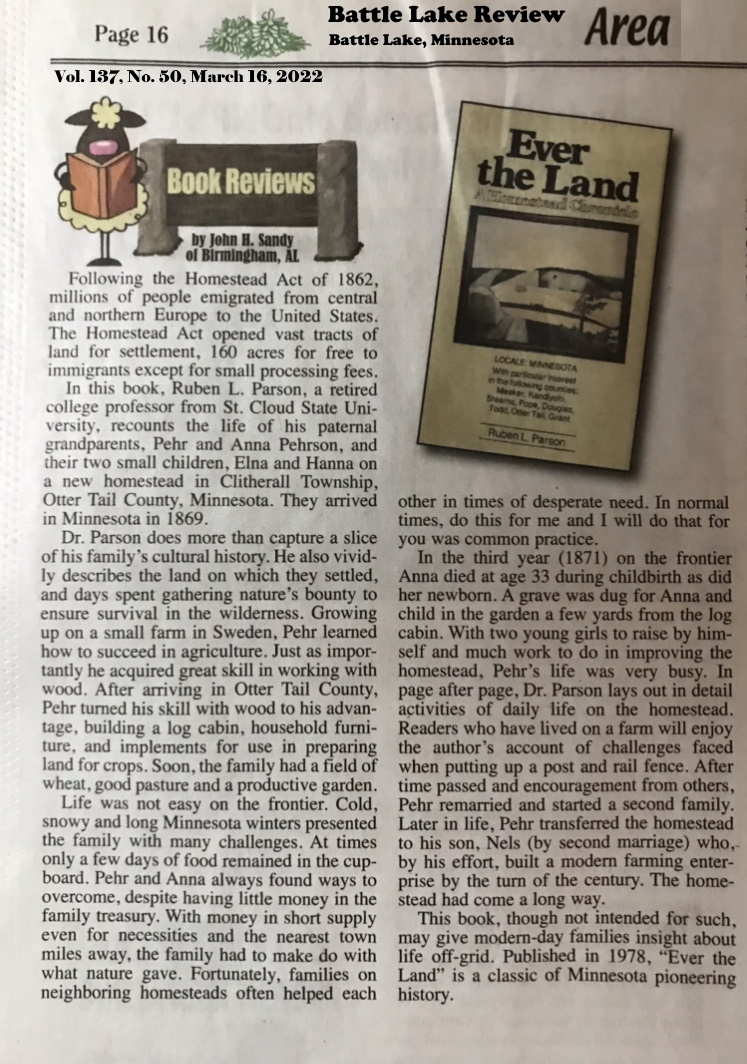RRINR book reviews
Parson, Ruben L. Ever the Land: A Homestead Chronicle. Staples, Minn: Adventure Publications, 1978.


FULL TEXT OF IMAGE ABOVE
Following the Homestead Act of 1862, millions of people emigrated from central and northern Europe to the United States. The Homestead Act opened vast tracts of land for settlement, 160 acres for free to immigrants except for small processing fees. In this book, Ruben L. Parson, a retired college professor from St. Cloud State University, recounts the life of his paternal grandparents, Pehr and Anna Pehrson, and their two small children, Elna and Hanna, on a new homestead in Clitherall Township, Otter Tail County, Minnesota. They arrived in Minnesota in 1869. Dr. Parson does more than capture a slice of his family’s cultural history. He also vividly describes the land on which they settled, and days spent gathering nature’s bounty to ensure survival in the wilderness. Growing up on a small farm in Sweden, Pehr learned how to succeed in agriculture. Just as importantly he acquired great skill in working with wood. After arriving in Otter Tail County, Pehr turned his skill with wood to his advantage, building a log cabin, household furniture, and implements for use in preparing land for crops. Soon, the family had a field of wheat, good pasture, and a productive garden. Life was not easy on the frontier. Cold, snowy, and long Minnesota winters presented the family with many challenges. At times only a few days of food remained in the cupboard. Pehr and Anna always found ways to overcome, despite having little money in the family treasury. With money in short supply even for basic necessities and the nearest town miles away, the family had to make do with what nature gave. Fortunately, families on neighboring homesteads often helped each other in times of desperate need. In normal times, do this for me and I will do that for you was common practice. In the third year (1871) on the frontier Anna died at age 33 during childbirth as did her newborn. A grave was dug for Anna and child in the garden a few yards from the log cabin. With two young girls to raise by himself and much work to do in improving the homestead, Pehr’s life was very busy. In page after page, Parson lays out in detail activities of daily life on the homestead. Readers who have lived on a farm will enjoy the author’s account of challenges faced when putting up a post and rail fence. After time passed and encouragement from others, Pehr remarried and started a second family. Later in life, Pehr transferred the homestead to his son Nels (by second marriage) who, by his effort, built a modern farming enterprise by the turn of the century. The homestead had come a long way. This book, though not intended for such, may give modern-day families insight about life off-grid. Published in 1978, Ever the Land is a classic of Minnesota pioneering history.
by John H. Sandy
The book review originally published in Battle Lake Review (Minnesota newspaper), March 16, 2022. p. 16.
The book is available in paperback from the Ottertail County Historical Society, 1110 Lincoln Avenue West, Fergus Falls, Minnesota 56537. $16.95. 218.736.6038


